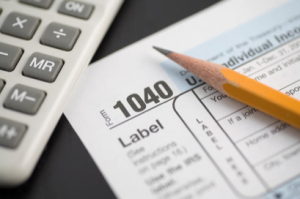 I came across an article recently in The Wall Street Journal by Laura Saunders discussing the limitations of the Federal program ‘Free File’, and my interest was piqued. I have long been an advocate for anything labeled ‘free’, and have taken some heat from friends in recent years for the number of hoops I am willing to jump through to save a quick penny. It was fascinating for me then, to read that such a seemingly straightforward program designed to save taxpayers hard earned money was being so neglected by a large majority of the population. Nina Olson explains that last year only 3% of the roughly 100 million eligible returns were filed using the Federal ‘Free File’ program.
I came across an article recently in The Wall Street Journal by Laura Saunders discussing the limitations of the Federal program ‘Free File’, and my interest was piqued. I have long been an advocate for anything labeled ‘free’, and have taken some heat from friends in recent years for the number of hoops I am willing to jump through to save a quick penny. It was fascinating for me then, to read that such a seemingly straightforward program designed to save taxpayers hard earned money was being so neglected by a large majority of the population. Nina Olson explains that last year only 3% of the roughly 100 million eligible returns were filed using the Federal ‘Free File’ program.
Laura Sanders explains in the article below, that the ‘Free File’ program, though specifically targeted for those earning $60,000 a year and less, allows companies partnered with the federal program to set further limitations. For example, Turbo Tax only accepts tax payers earning $31,000 or less unless they qualify for the Earned Income Credit.
Another point that she hits on in the article, is that many of the companies partnered with the ‘Free File’ program will charge a fee to file the State tax return, though the Federal return is free. This can be avoided, as many states also have programs set up that allow you to file the state return for free as well. The tip to use is to always go through the State’s website in order to qualify for each the free Federal and State returns.
Verenda Smith, an official at the Federation of Tax Administrators, has assembled a comprehensive guide to filing your Federal & State tax returns for free at her website http://www.taxadmin.org/fta/link/default.php?lnk=2.
While the majority of our clients will not qualify for the Federal ‘Free File’ program, it is likely that you know someone that will. Pass this along to anyone who might be interested in taking full advantage of this ‘Free’ program.
Why ‘Free File’ for Taxes Isn’t So Popular
Here’s How to Navigate the Maze of Offerings and Avoid Charges
BY: LAURA SAUNDERS
Source: Bloomberg News
The program is called Free File, and it sounds like a terrific idea for young workers and others with limited income.
Taxpayers who earned less than $60,000 in 2014 qualify for free brand-name help and electronic filing of their federal tax returns through companies such as Intuit ’s TurboTax and H&R Block .
Under an agreement with the Internal Revenue Service, a consortium of 14 commercial tax-preparation firms known as the Free File Alliance provides assistance with federal returns. The government requires the program to serve 70% of taxpayers; this year, that translates to people earning $60,000 or less.
For its part, the IRS agrees not to compete with the consortium by providing free online tax-return preparation.
Yet few taxpayers use Free File. Last year only about 2.8 million federal returns for individuals were filed through the program, according to data from the Free File Alliance, although more than 100 million returns were eligible.
Nina Olson, the national taxpayer advocate, who is charged by Congress with representing taxpayer interests, says “the fact that less than 3% of eligible taxpayers are using Free File suggests the program is failing to achieve its objective.”
Instead, she says, the IRS should give taxpayers online access to key forms such as W-2 and 1099 information reports—and the option of filing returns directly with the IRS.
“Because of Free File, many companies now provide more free tax services than they used to,” says Tim Hugo, executive director of the Free File Alliance, who says the program has served more than 43 million taxpayers since its 2003 debut.
Carving Out Niches
A closer look at Free File shows possible reasons it isn’t more popular. Although the Free File consortium as a group serves all taxpayers earning less than $60,000, the firms are allowed to carve out their own niches, serving some taxpayers but not others.
The Free File version of TurboTax, for example, accepts only taxpayers earning $31,000 or less unless they are eligible for the Earned Income Tax Credit, which benefits the working poor, or are on active duty in the military. In those cases, the income limit rises to $60,000.
H&R Block’s offering has an income limit of $53,500 and an age limit of 53. FileYourTaxes.com requires its users to be ages 15 to 65 and have at least $8,000 of income, while TaxHawk’s FreeTaxUSA excludes people from states without an income tax—perhaps because it charges users to prepare state-tax returns.
Complicating matters further, some providers offer similar-sounding but different “free” offers, which can come with additional fees.
H&R Block, for example, has an option called Federal Free that has no income limit, but it typically charges for state returns, whereas its actual Free File version offers free state returns in some (but not all) states.
It also is difficult to determine how much guidance Free File users will receive from a given firm or for a particular form. Many firms offer more support to participants who are willing to pay for an upgrade.
Avoiding Fees
If you or someone you know is eligible for Free File, here are ways to help navigate the maze and avoid paying unnecessary fees.
Know your limits—income and otherwise. The $60,000 overall ceiling applies to so-called adjusted gross income, which can be very different from gross income. For example, AGI is reduced by contributions to individual retirement and health-savings accounts and increased by capital gains and dividends.
Each provider typically also imposes further limits based on age, income, state of residence, military pay or earned-income-tax-credit eligibility. There is a screening tool at freefile.irs.gov to determine which firms serve specific taxpayers.
Know which federal forms are included. All consortium members are required to offer Free File users access to 30 common tax forms, which are listed at irs.gov/freefile. They include Schedules A, B, C, D and Part 1 (rental income) of Schedule E.
This year, firms also must include two new Affordable Care Act-related forms: Form 8962 for the Premium Tax Credit and Form 8965 for Health Coverage Exemptions. The latter includes instructions for computing the payment owed by people who didn’t have ACA-approved health coverage last year.
Be wary of special offers. Under the agreement with the IRS, Free File companies may not disclose or use taxpayer information for purposes other than tax-return preparation without the voluntary consent of the taxpayers, Mr. Hugo says. There are other safeguards as well.
However, several provider websites invite Free File taxpayers to take advantage of special offers. Taxpayers who do so may not receive the same safeguards, and they may even incur charges for filing federal returns.
Watch out for state returns. The IRS’s Free File site warns that its members may charge participants for state returns. For many taxpayers, this is the trickiest part of free filing.
Currently, 21 states and the District of Columbia cooperate with Free File Alliance members to offer free tax-prep for some state returns. In some cases, however, taxpayers must use the state website to take advantage of the offer rather than going directly to the company’s site.
Another 18 states offer their own tax-prep and e-filing sites that are free for all taxpayers, according to Verenda Smith, an official at the Federation of Tax Administrators.
These state sites typically don’t import information from the current federal return, though there are usually only one or a few numbers that must be transferred, she says.
Other states, including New York, Pennsylvania, Alabama and California, have agreements with commercial firms—as well as their own free programs—to handle state returns, Ms. Smith says. In New York, state tax officials recommend going through the state website to avoid unnecessary fees.
To avoid unpleasant surprises, Ms. Smith’s group has a comprehensive guide to state tax-filing tools on its website (taxadmin.org).
“There’s nothing more frustrating than finishing your ‘free’ tax return and finding out you’ll have to pay to file—or else start over,” Ms. Smith says.




